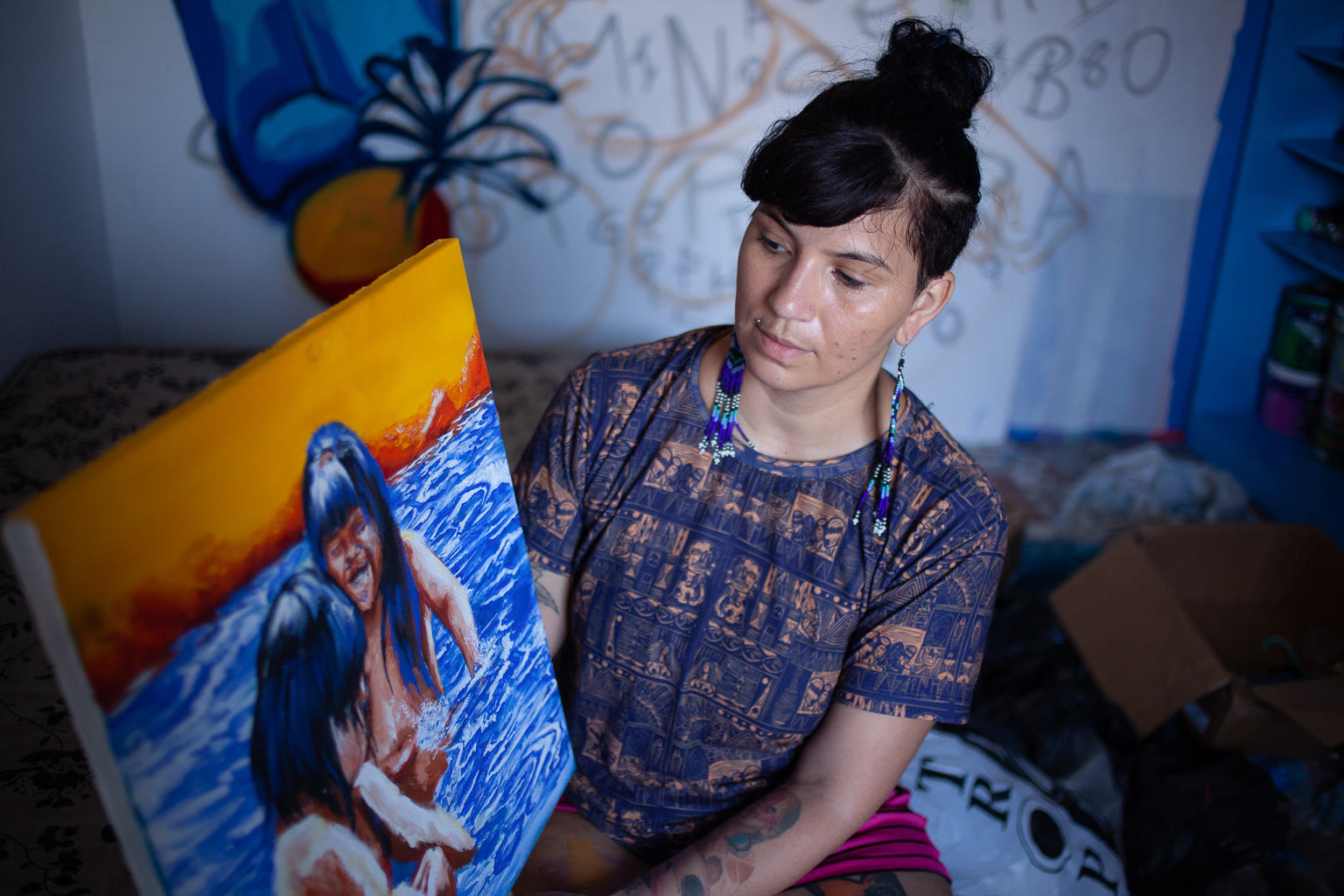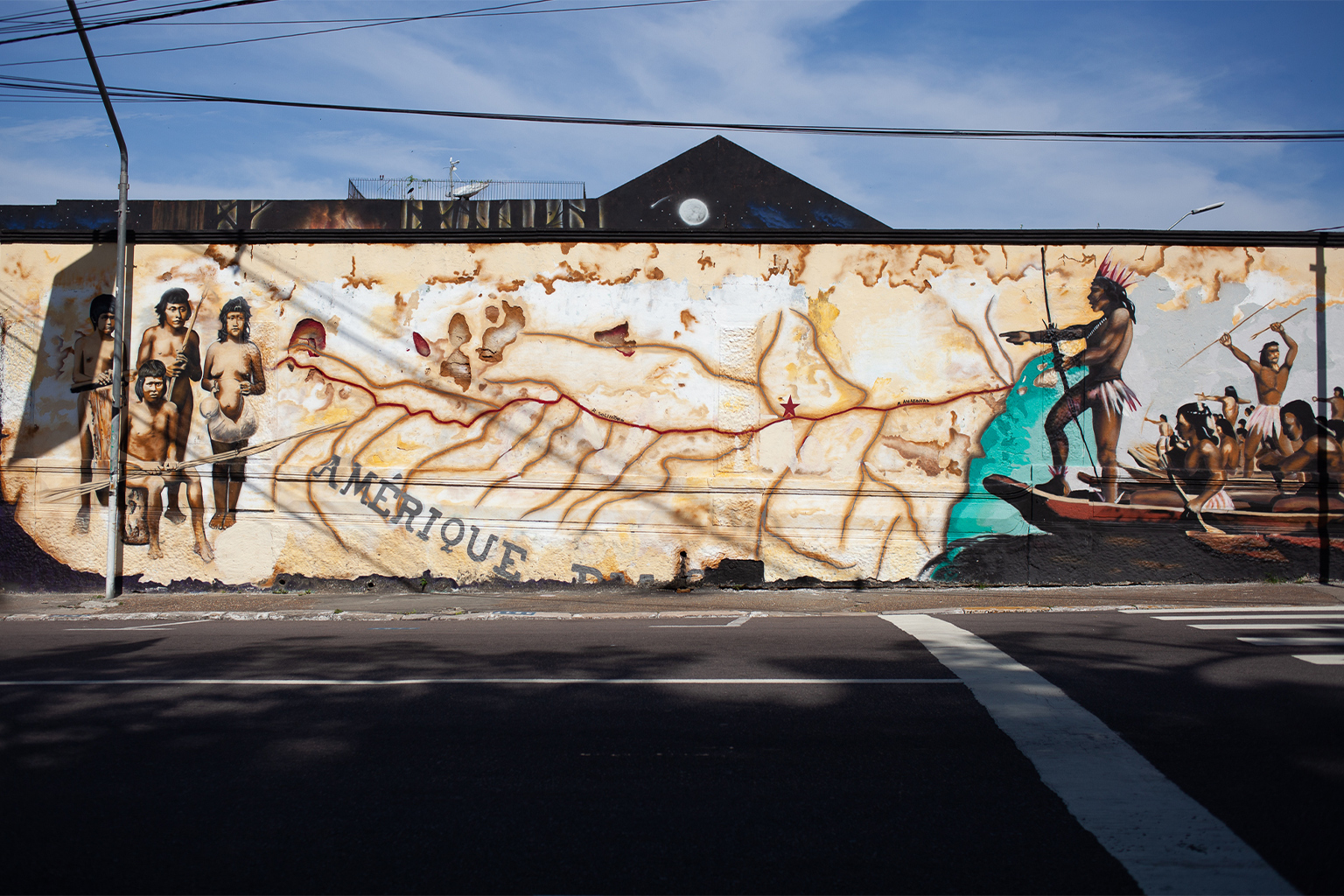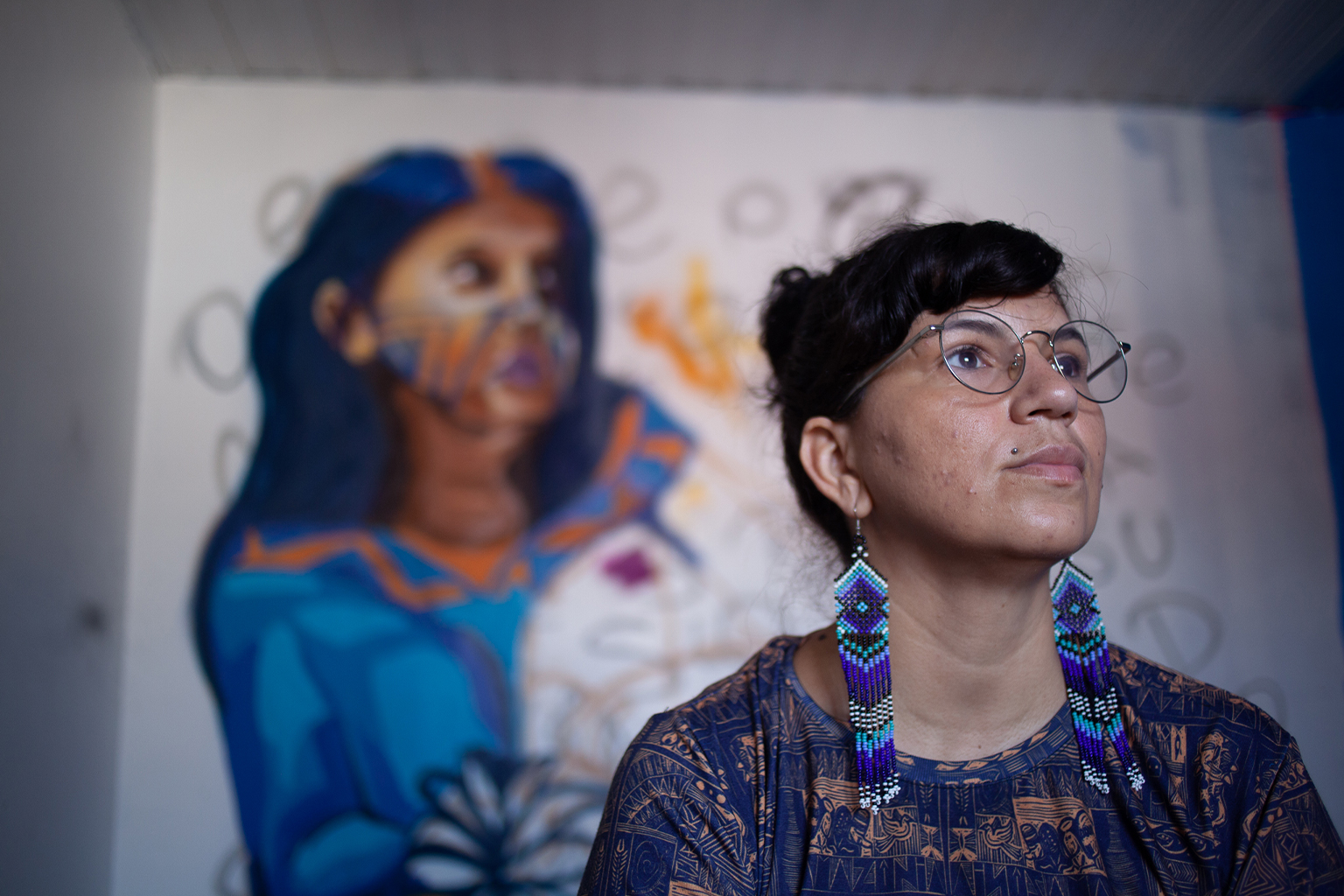- Graffiti artists are painting murals recounting the history of Indigenous people and honoring their culture in the capital of Amazonas, the Brazilian state with the largest Indigenous population.
- Indigenous community leaders say they hope the movement will increase the visibility of Indigenous people living in cities, who often face poverty, housing insecurity and stigma that discourages many from maintaining their culture and identity.
- Fearing cultural erasure, Indigenous activists are urging Indigenous people to embrace their ancestry and identify themselves as Indigenous in Brazil’s next census, expected to begin in August 2022.
- As Indigenous people in cities reclaim their identities, occupying public spaces through street art is playing a key role in the fight to make Indigenous people in urban areas more visible.
MANAUS, Brazil — In the historic center of Manaus, the largest city in the Brazilian Amazon, a giant mural depicting the city’s Indigenous history looms above pedestrians jostling for space on the sidewalk.
Towering 34 meters (112 feet) high and outlined in thick streaks of spray paint, it shows canoes carrying Indigenous people spilling onto a web of Amazonian rivers. A graveyard pays homage to the Indigenous cemetery that once stood here — and the violent fate many Indigenous people faced at the hands of colonizers.
The mural is unusual because, until recently, Manaus, the bustling capital of Amazonas state that was named after the Manaós people who once called it home, was reluctant to embrace the stories of the Indigenous people who first inhabited this land, according to Jaime Diakara, an anthropologist and painter from the Desana Indigenous group.
“The state has not recognized Indigenous people’s experiences historically,” said Diakara, a researcher at the Federal University of Amazonas’s Indigenous studies center. “So we’ve faced great obstacles to showcasing our identity, showcasing our culture and our values.”


The starkest example is perhaps the very site where the mural now stands, just across the street from the Praça Dom Pedro II, an elegant European-style square built in 1852 in honor of Brazil’s last emperor. Decades ago, archaeologists discovered that the square had been built atop an ancient Indigenous cemetery, containing burial urns dating back more than 1,500 years. But until recently, this slice of Indigenous history was largely ignored, Diakara said.
“This is a site that is sacred,” he told Mongabay over the phone. “But the state did nothing to honor it until now.”
This changed last year, when the city commissioned artist Fábio Ortiz to create a of four images spanning 140 square meters (1,500 square feet), in honor of the memory of Indigenous people in Manaus. The most striking of the images, inaugurated in April 2020, shows a defiant Ajuricaba, the Manaós Indigenous leader who rebelled against the colonizers in the 18th century and became a symbol of resistance.
Last September, Manaus also unveiled its first exhibition of Indigenous art in a historic building that once housed the state’s legislative assembly, just across the street from the mural. Many observers saw the 40-day art exhibition as a turning point for the city.
“These initiatives make Indigenous culture more visible, they are a way of honoring Indigenous artists,” said Diakara, whose own art was exhibited in the show. “But the state can’t stop there. It still has a very long way to go.”

Identity struggle
As Manaus begins to recognize its Indigenous history, a growing number of its residents are embracing their own Indigenous heritage too.
Amazonas is home to Brazil’s largest Indigenous population, where 168,700 people identify as Indigenous, according to the country’s 2010 census, the most recent one carried out. Manaus itself is home to nearly 4,000 Indigenous people, census figures show, but Indigenous leaders say that number is a vast undercount, with some placing the population closer to 30,000.
More than a third of Brazil’s nearly 818,000 Indigenous people live in cities, according to the census. This diaspora is the aftermath of their displacement during the colonial period from the places where cities were built, historians say. Many also moved to urban areas seeking better living conditions, such as health care, employment and education, Indigenous leaders say. Indigenous territories are also increasingly under attack, as land grabbers, cattle ranchers and illegal miners invade their lands, raze their forests and poison their rivers.
Yet, in cities, they often face poverty, housing insecurity, and social stigma that discourages many from identifying as Indigenous or continuing their way of life, said Vanda Ortega, an Indigenous activist and community leader from the Witoto Indigenous group.
“Indigenous people in cities face a whole other set of challenges,” she told Mongabay in an interview in Manaus. “How do you preserve your culture when you can’t dance or paint yourself, when you can’t stay connected to the forest?”

In Manaus, many Indigenous people live in illegal settlements on the city’s fringes, building makeshift communities where they can maintain their way of life by growing crops, living communally and holding traditional ceremonies. But authorities have dismantled several of these settlements, scattering communities and leaving residents homeless.
As traditions become harder to maintain outside of villages, some Indigenous people end up losing touch with their culture, said Tsa Chira Mapa Kokama, an artist who works with traditional body painting and moved to Manaus to help keep the art form alive in the urban context.
“It’s very hard to maintain your identity in the city,” she told Mongabay in a phone interview. “But even if we leave the village, our history and our lineage remains in our blood … And more and more people are seeking out the history of their families and their ancestors.”
Fearing that migration to cities could lead to an erasure of Indigenous culture, community leaders are urging Indigenous people across Brazil to embrace their identity and declare their ancestry in this year’s census, expected to begin in August.
Indigenous leaders estimate that the next census will show there are more than 1 million Indigenous people in Brazil today. This boost in numbers will give much-needed visibility to Indigenous communities, especially those living in urban contexts, Ortega said.
“That will be a historic moment for me,” she said. “Our generation is mobilizing to reclaim our stories, to strengthen our Indigenous identity … And as our voices grow, we gain strength to fight for our rights.”

‘Our history on the walls’
Chermie Ferreira didn’t always identify as an Indigenous woman. Even though the graffiti artist’s great-grandfather was Indigenous Kokama, Ferreira was always reluctant to claim this identity, largely because she had grown up disconnected from Indigenous tradition and culture.
“I couldn’t identify myself as a white woman,” she told Mongabay in an interview at her studio on the outskirts of Manaus. “But society has a very set idea of what an Indigenous person is: it’s someone with dark skin, straight hair, narrow eyes, someone born in the forest.”
After years of struggling to find her place in society and as an artist, Ferreira finally began reclaiming her Indigenous identity and rediscovering her ancestors’ culture two years ago, empowered by Indigenous leaders in Manaus. And she says she sees many others going through a similar reawakening to their own Indigenous identities.
“For a long time … people wanted to be white, they didn’t want to be Indigenous in the context that we live in,” Ferreira said. “Now, people are beginning to identify as Indigenous, to be proud of what Indigenous people represent.”
Graffiti art has now become an outlet for Ferreira to tell the stories of her ancestors. Last year, she also took part in the city’s inaugural Indigenous art exhibition. Her art often features delicately painted Indigenous and riverine people, who are often depicted on canoes floating on vibrant blue waters.
“I started bringing [these elements] in to talk about the memory of my family,” she said. “And by speaking about my family, I’m talking about the memory of the riverine peoples, I’m talking about Indigenous peoples, and I’m talking about the north.”
Across Brazil, other graffiti artists are transforming public spaces into canvases for Indigenous stories too. In São Paulo and Rio de Janeiro, Indigenous faces are graffitied on the facades of buildings and on the walls of alleyways. In Belo Horizonte, the image of an Indigenous woman holding a child sprawls across a 1,000-m2 (10,800-ft2) wall — the world’s largest mural painted by an Indigenous artist.
Occupying public spaces in this way allows Indigenous people to affirm their identity and history, said Zulu Anápuàka Tupinambá, an Indigenous activist and cultural critic. This way, graffiti brings more visibility to Indigenous people, who are often left out of cultural spaces, he said.

Banner image: A mural depicting Indigenous faces stretches across a wall in the historic center of Manaus, in the Brazilian state of Amazonas. More than a third of Brazil’s Indigenous people live in cities, but their identity and culture is often largely invisible. Activists say they hope a wave of new graffiti art can change that. Image by Ana Ionova for Mongabay.
FEEDBACK: Use this form to send a message to the author of this post. If you want to post a public comment, you can do that at the bottom of the page.
